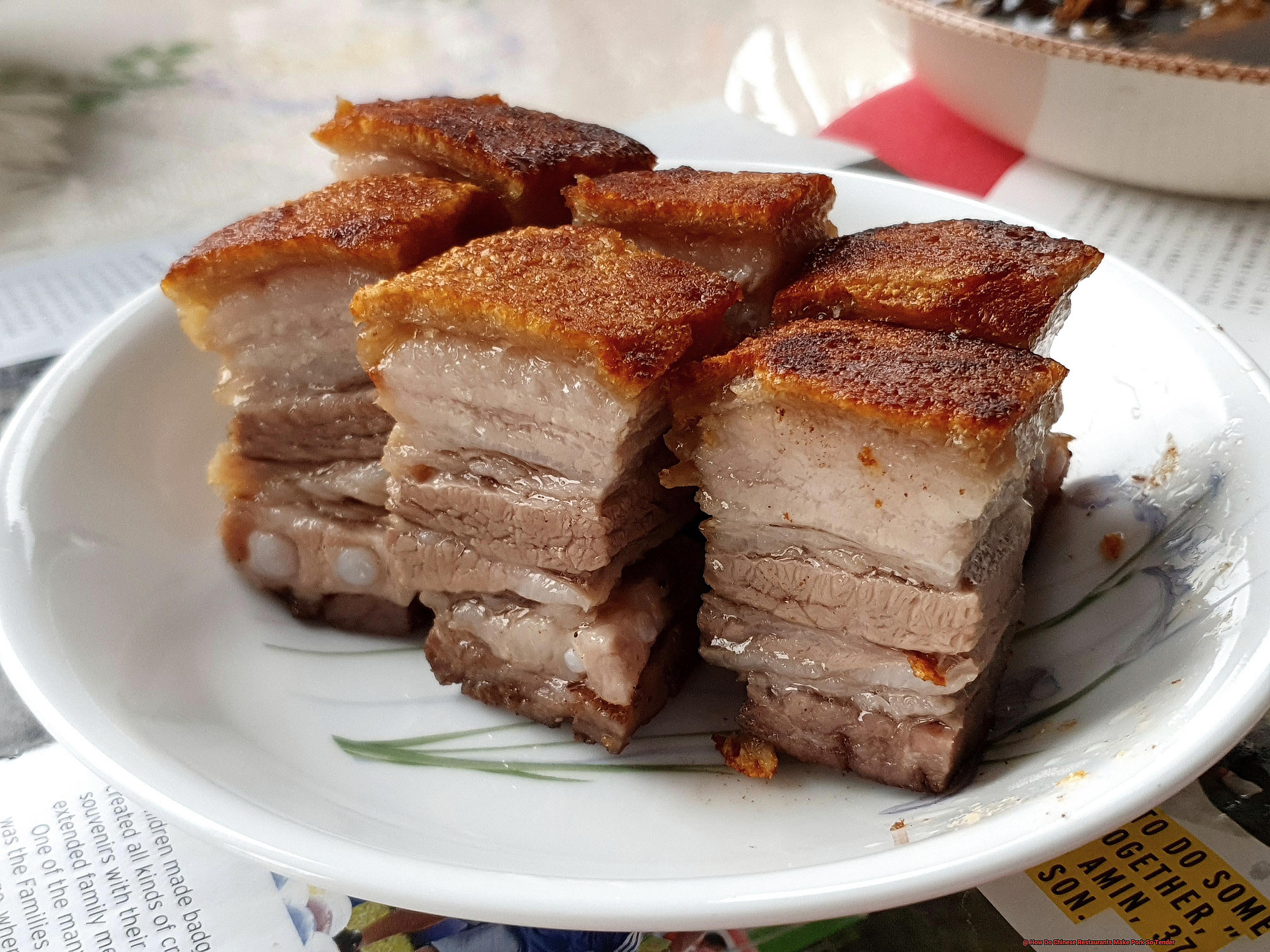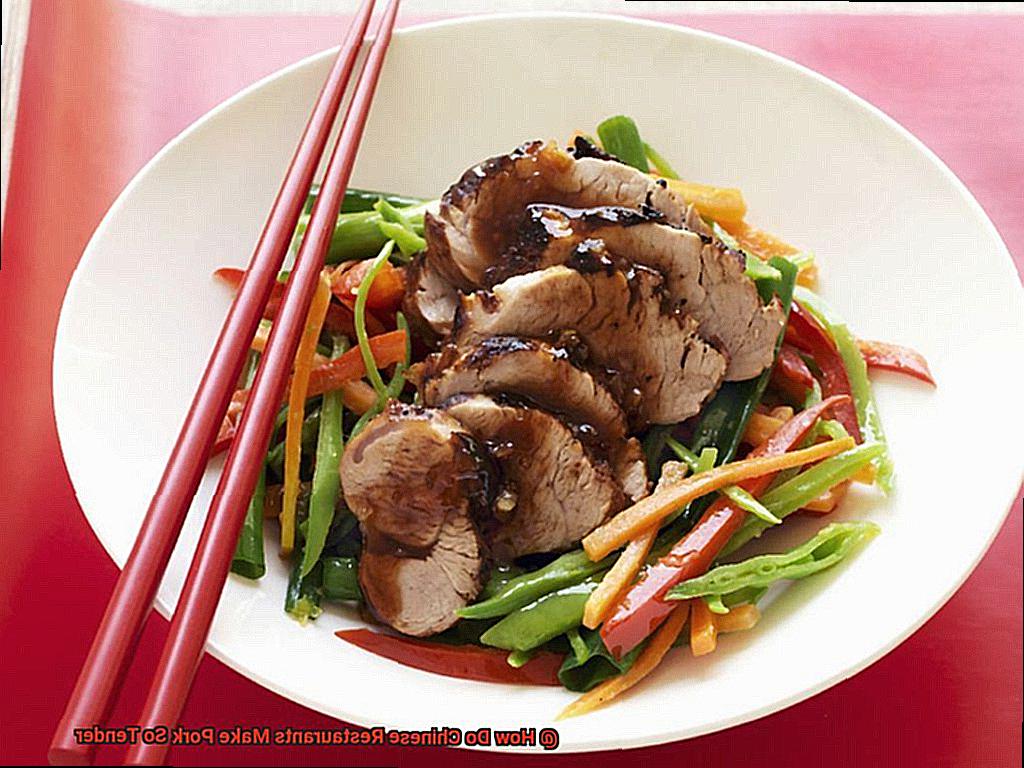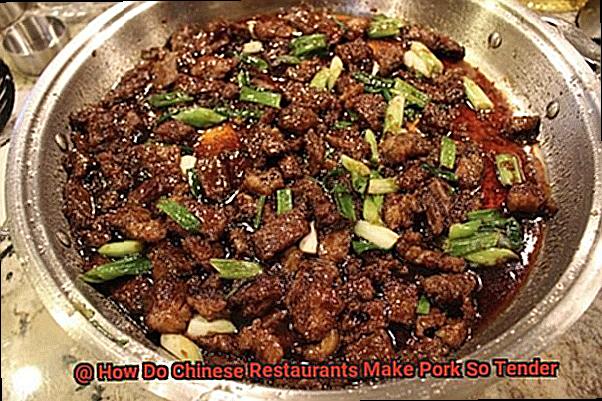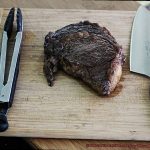Have you ever taken a bite of Chinese-style pork and wondered how it’s so incredibly tender and juicy? As a self-proclaimed foodie, I’ve been pondering this question for quite some time. But fear not, my fellow curious eaters, as I’ve done the research to uncover the secret behind this mouth-watering texture.
It turns out that Chinese restaurants have perfected the art of making pork tender by utilizing a variety of cooking methods and ingredients. In this blog post, we’ll dive deep into the secrets behind their succulent pork dishes and provide you with step-by-step instructions to replicate them in your own kitchen.
From marinating the meat in an exotic blend of spices to slow-cooking and stir-frying, each technique is crucial in achieving that melt-in-your-mouth texture. We’ll explore key ingredients like rice wine and baking soda that are used to tenderize the pork, as well as discuss cooking techniques that make all the difference.
So whether you’re a food enthusiast or someone looking to improve your culinary skills, get ready for an exciting journey into the world of Chinese-style pork dishes. Join me as we unravel the mystery of how Chinese restaurants make their pork so incredibly tender.
Contents
What is Marination?
Have you ever wondered how Chinese restaurants manage to turn tough cuts of meat into succulent, flavorful dishes? The secret lies in the technique of marination – the process of soaking meat in a mixture of liquid, spices, herbs, and other flavorings before cooking it. Marination not only imparts delicious flavors to the meat, but it also tenderizes it by breaking down its fibers and connective tissues.
In Chinese cuisine, marination is a popular technique used to make pork tender. The main ingredients used in pork marinades include soy sauce, rice wine, ginger, garlic, sugar, and sometimes hoisin sauce. These ingredients are blended to create a flavorful marinade that will penetrate the meat.
There are two ways to marinate pork for Chinese dishes: dry rub or liquid marinade. A dry rub consists of spices and seasonings that are rubbed onto the meat and left to sit for several hours or overnight. A liquid marinade is made by mixing the ingredients together and then pouring them over the meat in a container or plastic bag. The meat is then left to marinate in the refrigerator for several hours or overnight.
Chinese restaurants often use a vacuum marinator which allows the marinade to penetrate the meat more deeply and quickly than traditional methods. This machine creates a vacuum around the meat which helps to open up its pores and allow the marinade to penetrate more deeply.
But marination is not the only technique used by Chinese chefs to make pork tender. They also use baking soda and velveting techniques. Baking soda is rubbed onto the surface of pork before cooking to break down proteins in the meat, making it more tender. Velveting involves coating thinly sliced pork in a mixture of cornstarch and egg whites before cooking it in hot oil or boiling water for a short amount of time. This technique creates a protective layer around the meat, preventing it from overcooking and becoming tough.
Moreover, Chinese chefs often use cuts of pork that are naturally tender, such as pork loin or tenderloin. These cuts have less connective tissue and fat, making them easier to cook and resulting in a more tender end product.
How Does Marination Make Pork Tender?
As a connoisseur of this technique, let me tell you how marination can turn your pork dishes into succulent and mouth-watering delights.
Marination involves soaking the meat in a mixture of herbs, spices, acidic ingredients, and oil for a specific period. The acid in the marinade, such as citrus juice, vinegar or wine, breaks down the connective tissues that hold the muscle fibers together. This process tenderizes the meat, making it soft and juicy. The longer the meat is marinated, the more tender it becomes. However, be careful not to overdo it as too much time in the marinade can make it mushy and overpowering.
Aside from tenderizing pork, marination imparts flavor into every bite. Ingredients like garlic, ginger, soy sauce and five-spice powder infuse different aromatic flavors into your meat. These ingredients do not only enhance the taste of your dish but also mask any unpleasant odors that may come from storing or cooking your pork.
Combining wet and dry marinades is a common technique used by Chinese restaurants to achieve maximum tenderness and flavor. Wet marinades penetrate deeper into the meat while dry marinades create a crispy exterior when grilled or roasted.
What is Baking Soda and How is it Used to Make Pork Tender?
Fear not, for the solution lies in your very own pantry with the humble baking soda. As an expert on the topic, let me take you on a journey to discover the wonders of baking soda as a meat tenderizer and how it can transform your pork into juicy and tender bites.
Baking soda, also known as sodium bicarbonate, is a versatile household ingredient commonly used in baking and cleaning. However, it also has the unique ability to tenderize meat, including pork. This is due to its alkaline properties that break down the proteins in the meat and make it more tender.
To use baking soda as a meat tenderizer, simply mix one teaspoon of baking soda with half a cup of water and coat your pork with the mixture. Let it sit for at least 15-20 minutes before cooking, and watch the magic happen as your pork becomes tender and juicy.
While this method may seem simple, there are a few things to keep in mind to avoid any negative effects. Firstly, using too much baking soda can lead to a mushy texture and an unpleasant taste. Therefore, it’s important to stick to the recommended ratio of one teaspoon per half cup of water.
It’s also worth noting that thicker cuts of pork may not benefit from this method as much as thinner cuts or thinly sliced pork. The baking soda may not penetrate the meat enough to have a significant effect. So keep this in mind when choosing your cut of pork.
What is Velveting and How Does it Work?
If you’ve ever had Chinese food, chances are you’ve tasted the velvety texture of perfectly cooked meat. But did you know that this mouthwatering texture is created through a specific cooking technique called velveting?

Velveting is a Chinese culinary technique that has been used for centuries to make meats like pork, chicken, and shrimp more tender and succulent. It involves marinating the meat in a mixture of cornstarch, egg whites, and rice wine or vinegar. The marinade forms a protective coating on the surface of the meat, sealing in moisture and preventing it from drying out during cooking.
The cornstarch in the marinade plays a key role in velveting by coating the surface of the meat. This coating creates a barrier that locks in moisture and prevents the meat from becoming dry and tough. The egg whites add yet another layer of protection, creating an impermeable shield between the meat and cooking liquid.
But that’s not all- the acid in rice wine or vinegar helps to break down the proteins in the meat, making it even more tender and succulent. This combination of ingredients creates a magical transformation in the texture of the meat, resulting in a velvety mouthfeel that is sure to impress.
Blanching the meat in hot oil or water is another crucial step in velveting. The high heat cooks the meat quickly and seals in its juices, resulting in a juicy and tender final product. However, it’s important not to overcook the meat during this step, as overcooking can cause it to become tough and chewy.
The Benefits of Using Natural Cuts of Pork for Tenderness
The secret lies in the use of natural cuts of pork. As an expert in Chinese cuisine, I can attest that using natural cuts of pork has numerous benefits that contribute to the mouth-watering dishes we all know and love.

One of the greatest benefits of using natural cuts of pork is their marbling. Natural cuts contain more marbling than pre-packaged meats, meaning there is fat dispersed throughout the meat. This marbling helps keep the meat moist and tender during cooking, resulting in a juicier and more flavorful dish. And let’s be honest, who doesn’t love a juicy piece of pork?
Additionally, natural cuts of pork are often fresher and less processed than pre-packaged meats. This not only contributes to better flavor but also allows for more control over the cooking process. Chinese restaurants may marinate the pork overnight or use a slow-cooking method to further enhance tenderness. By taking the time to prepare the pork properly, the end result is a dish that melts in your mouth.
Another benefit of using natural cuts of pork is their versatility. Different cuts of pork can be used for different dishes, such as tenderloin for stir-fry or ribs for barbecue. Using natural cuts allows Chinese restaurants to showcase the range of flavors and textures that can be achieved with pork. From sweet and savory stir-fries to smoky ribs, natural cuts help create a variety of delicious dishes.
The use of natural cuts also contributes to overall quality in Chinese cuisine. By prioritizing quality and freshness, Chinese restaurants create dishes that stand out in taste and texture compared to pre-packaged alternatives. Natural cuts allow chefs to showcase their skills and create unique flavor combinations that cannot be achieved with processed meats.
Tips for Making Chinese Restaurant-Style Pork at Home
If you’re looking to create Chinese restaurant-style pork in your own kitchen, there are several techniques and ingredients to keep in mind. To achieve that tender and juicy texture, it’s important to start with the right cut of pork. Pork butt or shoulder are popular choices as they have a good balance of fat and meat.
Once you’ve selected your pork, marinating it is crucial to infuse flavor and tenderize the meat. Chinese restaurants often marinate their pork overnight or for several hours in a mixture of soy sauce, rice wine, sugar, and other seasonings. This helps to break down the fibers in the meat, resulting in a more tender texture.
Another tip for making Chinese restaurant-style pork at home is to cook the meat low and slow. This gentle cooking process allows the meat to become tender without becoming tough or dry. Some recipes suggest using a slow cooker or an oven set to a low temperature, while others recommend simmering the meat on the stovetop for several hours. The key is to be patient and allow the pork to cook until it’s fully cooked and tender.
To create a velvety texture and keep your pork moist and tender, consider using a technique called velveting. This involves coating thinly sliced or diced pieces of pork in a mixture of cornstarch, egg whites, and oil before briefly cooking them in boiling water.
Finally, adding cornstarch to the marinade or coating the pork in cornstarch before cooking can help create a crispy exterior while keeping the inside juicy and tender. This method is commonly used in Chinese cuisine to create that signature crunch.
Common Mistakes to Avoid When Making Pork Tender
If you’re looking to make pork that is melt-in-your-mouth tender, it’s important to avoid some common mistakes. As an expert on the subject, I have compiled a list of the most frequent missteps that people make when cooking pork.
First and foremost, overcooking pork is a cardinal sin. Pork should be cooked to an internal temperature of 145°F and then taken off the heat to rest. Cooking it beyond this point can cause the meat to become dry and tough, ruining all your hard work.
Another mistake is not using the right cut of pork for your dish. Lean cuts like pork loin can be challenging to cook correctly and can end up being tough and chewy. On the other hand, cuts like pork shoulder or belly have more fat and connective tissue, which allows them to remain moist and tender during cooking.
Marinating your meat for too long can also be problematic. While marination can be an excellent way to enhance flavor and break down tough fibers, leaving the meat in marinade for too long can make it mushy and over-seasoned. A good rule of thumb is to marinate for no longer than 24 hours.
Finally, cutting into your meat too soon after cooking can cause toughness as well. When you cook meat, its juices redistribute throughout the muscle fibers. If you cut into it too soon, these juices will escape, leaving you with dry and chewy meat.
KLS1Vx0QvB4″ >
Conclusion
To sum it up, Chinese restaurants have mastered the art of creating tender pork by using a combination of cooking methods and ingredients that bring out the best in the meat. Marination is a popular technique that involves blending soy sauce, rice wine, ginger, garlic, sugar, and hoisin sauce to create a flavorful marinade that penetrates the meat for maximum tenderness.
Another secret ingredient used by Chinese chefs is baking soda. This magical powder helps break down proteins in the pork, resulting in tender and juicy meat. Velveting is yet another technique where thinly sliced pork is coated with a mixture of cornstarch and egg whites before being cooked in hot oil or boiling water for a short amount of time.
Chinese chefs also choose cuts of pork that are naturally tender such as pork loin or tenderloin. These cuts have less connective tissue and fat which makes them easier to cook while delivering an incredibly tender end product.
To recreate restaurant-style pork at home, start by selecting the right cut of pork and marinating it overnight with soy sauce, rice wine, sugar, and other seasonings. Cook low and slow using techniques like velveting or adding cornstarch to achieve a crispy exterior while keeping the inside juicy and tender.
However, there are some common mistakes you should avoid when making pork tender at home such as overcooking your meat or not using the right cut for your dish. Also, marinating for too long or cutting into your meat too soon after cooking can ruin your efforts.






